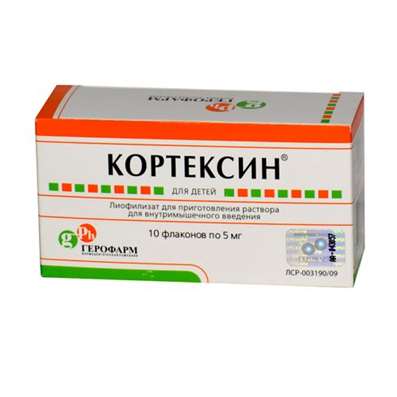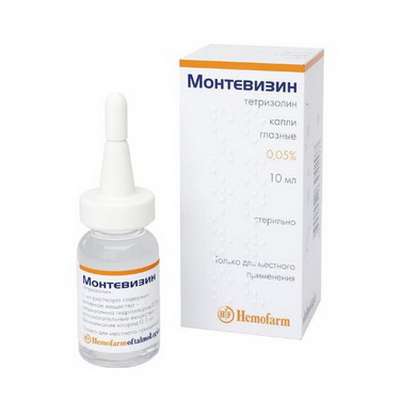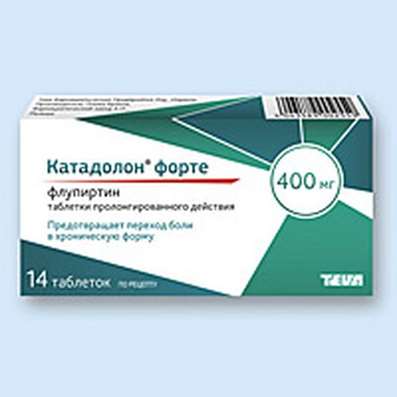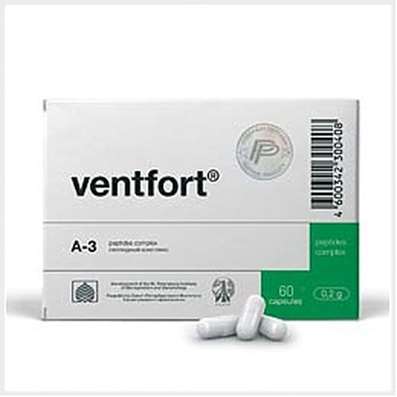Instruction for use: Solian
I want this, give me price
Dosage form: tablets
Active substance: Amisulpride*
ATX
N05AL05 Amisulpride
Pharmacological group:
Neuroleptics
The nosological classification (ICD-10)
F20 Schizophrenia: Schizophrenic conditions; Exacerbation of schizophrenia; Schizophrenia; Chronic schizophrenia; Dementia praecox; Bleuler's disease; Psychotic discordant; Dementia early; The febrile form of schizophrenia; Chronic schizophrenic disorder; Psychosis of the schizophrenic type; Acute form of schizophrenia; Acute schizophrenic disorder; Cerebral Organic Insufficiency in Schizophrenia; Acute attack of schizophrenia; Schizophrenic psychosis; Acute schizophrenia; Sluggish schizophrenia; Sluggish schizophrenia with apathoabulic disorders; Acute stage of schizophrenia with excitation
Composition
Tablets - 1 table.
active substance:
amisulpride 100 mg
auxiliary substances: carboxymethyl starch sodium (sodium amylopectin glycolate) (type A) - 24 mg; lactose monohydrate - 69.6 mg; MCC - 36 mg; hypromellose - 6.8 mg; magnesium stearate - 3.6 mg
Tablets - 1 table.
active substance:
amisulpride 200 mg
auxiliary substances: carboxymethyl starch sodium (sodium amylopectin glycolate) (type A) - 48 mg; lactose monohydrate - 139.2 mg; MCC - 72 mg; hypromellose - 13.6 mg; magnesium stearate 7.2 mg
Tablets covered with a film membrane 1 tab.
active substance:
amisulpride 400 mg
auxiliary substances: sodium carboxymethyl starch (sodium amylopectin glycolate) (type A); lactose monohydrate; ICC; hypromellose, magnesium stearate
shell: MCC; hypromellose; macrogol stearate; titanium dioxide (E171)
Description of dosage form
Tablets of 100 mg: round flat, white or almost white with a dividing risk on one side and engraving "AMI 100" - on the other.
Tablets 200 mg: round flat, white or almost white with a dividing risk on one side and engraving "AMI 200" - on the other ..
400 mg tablets: oblong biconvex, covered with a white film shell, with an engraving "AMI 400" and a fault line between "AMI" and "400" - on one side.
Pharmachologic effect
Mode of action - antipsychotic, neuroleptic.
Pharmacodynamics
Amisulpride is an antipsychotic drug from the group of substituted benzamides. The pharmacodynamic profile of amisulpride is due to selective and preferential affinity for the subtypes of the D2- and D3-dopaminergic receptors of the limbic system. Amisulpride has no affinity for serotonin and other neuroreceptors, such as histamine, cholinergic and adrenergic receptors.
In animal studies, it has been shown that when used in high doses, amisulpride blocks dopaminergic neurons of the mesolimbic system to a greater extent than similar neurons in the striatum system. This specific affinity explains, apparently, the predominance of antipsychotic effects of amisulpride over its extrapyramidal effects.
When used in low doses, amisulpride mainly blocks presynaptic D2- and D3-dopaminergic receptors, which can explain its positive effect on negative symptoms.
Pharmacokinetics
Amisulpride has two absorption peaks: one is achieved quickly, after an hour, and the second - between 3 and 4 hours after taking the drug. After taking the drug at a dose of 50 mg Cmax, corresponding to these peaks, are (39 ± 3) and (54 ± 4) ng / ml.
The volume of distribution is 5.8 l / kg. Due to the low binding to plasma proteins (16%), no interaction of amisulpride with other drugs is expected at the level of binding to the protein. Absolute bioavailability is 48%.
Amisulpride is slightly metabolized in the liver (about 4%), 2 inactive metabolites are identified. At the course of reception of cumulation of amisulpride does not occur, and its pharmacokinetics does not change. When administered with T1 / 2 amisulpride is approximately 12 hours.
Amisulpride is excreted unchanged in urine.
Renal Cl is approximately 330 ml / min.
Carbohydrate-rich foods significantly reduce AUC, Tmax and Cmax amisulpride, while fat-rich foods do not cause changes in the above pharmacokinetic indices. However, the importance of these observations in everyday clinical practice is unknown.
Renal failure. T1 / 2 in patients with renal insufficiency does not change, but systemic clearance decreases with a factor of 2.5 to 3. AUC of amisulpride with mild renal insufficiency is doubled, and in renal insufficiency of moderate severity - almost tenfold (see "Method of application and doses "). Experience with the drug in renal failure is limited, and there is no data on the use of amisulpride in a dose exceeding 50 mg.
Amisulpride is practically not excreted by hemodialysis.
Liver failure. Due to the fact that amisulpride is slightly metabolized in the liver, liver failure is not expected to accumulate the drug and its dosage is not required to be reduced.
Patients of advanced age. When comparing the pharmacokinetic parameters of patients older than 65 years with those in younger patients, it was found that after single administration of amisulpride in a dose of 50 mg, the values of Cmax, T1 / 2 and AUC were higher by 10-30%. Data on the pharmacokinetics in elderly patients with the course of amisulpride are absent.
Indications of the preparation Solian
Treatment of acute and chronic schizophrenia with productive symptoms (delusions, hallucinations, thinking disorders) and / or negative symptoms (flattening affect, loss of emotional and social ties), including patients with a predominantly negative symptomatology.
Contraindications
hypersensitivity to amisulpride or other components of the drug;
associated prolactin-dependent tumors (eg prolactinoma of the pituitary gland and breast cancer);
pheochromocytoma (diagnosed or suspected);
children and adolescents under 15 years of age (lack of clinical experience);
the period of breastfeeding;
severe renal insufficiency with Cl creatinine less than 10 ml / min (lack of clinical experience);
concomitant therapy with dopaminergic agonists (cabergoline, quinagolide) when used not for the treatment of Parkinson's disease (see "Interaction").
concomitant therapy with levodopa, amantadine, apomorphine, bromocriptine, entacapone, lisuride, pergolide, pyribedil, pramipexole, ropinirole, selegiline) (see "Interaction");
concomitant therapy with drugs that can prolong the QT interval and cause the development of rhythm disturbances, including a potentially life-threatening polymorphic ventricular torsade de pointes (see "Interaction"):
- antiarrhythmic agents of the IA class (quinidine, disopyramide) and III class (amiodarone, sotalol, dofetilide, ibutilide);
- other drugs (bepridil, cisapride, methadone, sultopride, thioridazine, dipemannil methyl sulfate, intravenous erythromycin, intravenously injected spiramycin, misolastine, IV vincamine, halofantrine, lumefantrine, sparfloxacin, moxifloxacin, pentamidine);
congenital galactosemia, glucose malabsorption syndrome or galactose, or lactase deficiency.
With caution: in patients with predisposing factors in the development of severe ventricular arrhythmias, including a potentially life-threatening polymorphic ventricular torsade de pointes, namely, in patients with a congenital prolonged QT interval acquired by prolonging the QT interval (when combined with drugs , increasing the duration of the QTc-interval, except for those indicated in the section "Contraindications" (see "Interaction"), bradycardia less than 55 bpm, electrolyte disorders, including hypokalemia , in patients receiving concomitant therapy with drugs capable of causing hypokalemia, a pronounced bradycardia of less than 55 bpm, to slow intracardiac conduction (because amisulpride is able to dose-dependently prolong the QT interval and increase the risk of developing severe ventricular arrhythmias, including polymorphic ventricular tachycardia such as " pirouette "(torsade de pointes) (see" Side effect "," Interaction "), in patients with renal insufficiency, there is a risk of cumulation of the drug, and experience with its use in renal failure is limited (see "Pharmacokinetics" and "Method of administration and dose", "Special instructions"); in elderly patients, tk. they have an increased predisposition to the development of arterial hypotension, excessive sedation; in elderly patients with dementia (see "Special instructions"); in patients with risk factors for stroke (see "Special instructions"); in patients with epilepsy, t. amisulpride can reduce the threshold of convulsive alertness; in patients with risk factors for thromboembolism (see "Side effects", "Special instructions"); in patients with Parkinson's disease, because amisulpride, like other antidopaminergic agents, can increase manifestations of Parkinson's disease (see "Special instructions"); in patients with diabetes mellitus and patients with risk factors for diabetes mellitus (because some atypical antipsychotics, including amisulpride, can cause an increase in blood glucose.
Application in pregnancy and lactation
Safety of reception of amisulpride during pregnancy is not established. Therefore, the use of the drug in pregnancy is not recommended, except when the expected benefit for the mother justifies the potential risk to the fetus. Although cases of side effects in newborns have not been described, theoretically amisulpride, when used at the end of pregnancy and at high doses, can cause side effects in neonates (atropine-like effects: tachycardia, hyperreflexia, bloating, meconium withdrawal, extrapyramidal symptoms: hypertension, tremor , sedation), so they may need to be monitored appropriately.
It is not known whether amisulpride is able to penetrate breast milk, so breast-feeding during its administration is contraindicated.
Side effects
Side effects are presented in accordance with the following gradations of their incidence: very often (> 10%), often (> 1%, <10); infrequently (> 0.1%, <1%); rarely (> 0.01%, <0.1%) and very rarely, including individual reports (<0.01%); unknown frequency (according to the available data, the frequency can not be determined).
The following side effects are observed in controlled clinical trials and in the post-marketing application of the drug. It should be noted that in some cases it is very difficult to differentiate the side effects from the symptoms of the underlying disease.
From the nervous system: very often - extrapyramidal symptoms (tremor, rigidity, hypokinesia, hypersalivation, akathisia, dyskinesia). These symptoms are usually mild when taken at optimal doses and partially reversible with the addition of anticholinergic antiparkinsonian drugs without discontinuing amisulpride treatment. The incidence of extrapyramidal symptoms depends on the dose. Therefore, in patients with predominantly negative symptoms taking amisulpride in a dose of 50-300 mg, the incidence of extrapyramidal disorders is very low; often acute dystonia (spasmodic torticollis, oculogic crises, trism), reversible with the addition of anticholinergic antiparkinsonian drugs without discontinuing amisulpride treatment; daytime sleepiness; infrequently, tardive dyskinesia characterized by rhythmic, involuntary movements predominantly of the tongue and / or muscles of the face, usually occurring after prolonged use of the drug. Anticholinergic antiparkinsonian drugs in these cases are ineffective or may enhance symptoms; seizures; unknown frequency - malignant neuroleptic syndrome (see "Special instructions").
From the gastrointestinal tract: often - constipation, nausea, vomiting, dry mouth.
On the part of the endocrine system: often - amisulpride causes an increase in plasma concentrations of prolactin, reversible after drug withdrawal. This can lead to the occurrence of galactorrhea, amenorrhea, gynecomastia, mammary glands and erectile dysfunction.
Metabolic disorders: often - weight gain; infrequently - hyperglycemia (see "Contraindications," With caution "and" Special instructions ").
Disorders from the cardiovascular system: often - arterial hypotension; infrequently bradycardia; unknown frequency - QT interval elongation; ventricular arrhythmias, such as torsade de pointes, a polymorphic ventricular tachycardia that can go into ventricular fibrillation and lead to cardiac arrest and sudden death (see "Special instructions"); thromboembolism, including pulmonary embolism, sometimes fatal and deep vein thrombosis (see "Special instructions").
From the side of laboratory indicators: infrequently - an increase in the levels of hepatic enzymes, mainly transaminases.
From the immune system: infrequently - allergic reactions.
Other: often - insomnia, feelings of anxiety, agitation, violations of orgasm, frigidity.
Interaction
Contraindicated combinations
With drugs that can prolong the QT interval and cause paroxysmal tachycardias, including potentially lethal polymorphic ventricular torsade de pointes (see "Contraindications"): with class I antiarrhythmics (quinidine, disopyramide) and grade III (amiodarone , sotalol, dofetilide, ibutilide); with bepridilom, cisapride, methadone, sultopride, thioridazine, dipemannil methyl sulfate, erythromycin (w / w), spiramycin (w / w), misolastine, winkamine (w / w), halofantrine, lumefantrine, sparfloxacin, gatifloxacin, moxifloxacin, pentamidine.
With dopaminergic agonists (cabergoline, quinagolide) when used not for the treatment of Parkinson's disease - the mutual antagonism of the effects of dopaminergic receptor agonists and neuroleptics. Dopaminergic agonists can cause or exacerbate psychotic symptoms. Amisulpride can enhance the symptoms of Parkinson's disease (see "Special instructions");
With levodopa (see "Contraindications") - reciprocal antagonism effects of levodopa and neuroleptics.
Unrecommended combinations
With drugs that increase the risk of potentially lethal polymorphic ventricular tachycardia of the "torsade de pointes" type, drugs that cause bradycardia (beta-blockers, verapamil, diltiazem, clonidine, guanfacine, digitalis preparations, donepezil, rivastigmine, tacrine, ambenonium chloride, galantamine, pyridostigmine bromide, neostigmine bromide).
With drugs that cause hypokalemia (causing hypokalemia diuretics, simulating intestinal peristalsis, laxatives, iv injectable amphotericin B, GCS, tetracosactide) - when using them, you must necessarily restore the loss of potassium and maintain a normal level of potassium in the blood.
With some neuroleptics (haloperidol, pimozide, pipothiazine, sertindole, chlorpromazine, levomepromazine, cyamemazine, sultopride, sulpiride, tiaprid, verialapride, droperidol), imipramine antidepressants, lithium preparations, azole antifungal agents - the risk of developing ventricular arrhythmias, in particular ventricular tachycardia of the type "Pirouette" ("torsade de pointes"):
With alcohol, amisulpride enhances the central effects of alcohol. Alcohol enhances the sedative effect of neuroleptics;
With dopaminergic agonists (amantadine, apomorphine, bromocriptine, entacapone, lisuride, pergolide, pyribedil, pramipexole, ropinirole, selegiline) (see "Contraindications" and "Special instructions") - mutual antagonism of the effects of dopaminergic receptor agonists and neuroleptics. Dopaminergic agonists can cause or exacerbate psychotic symptoms. Amisulpride can enhance the symptoms of Parkinson's disease.
Combinations that should be taken into account
With funds, depressing the CNS - morphine derivatives (analgesics, antitussives); barbiturates; benzodiazepines; non-benzodiazepine anxiolytics; hypnotics; antidepressants with sedative effect (amitriptyline, doxepin, mianserin, mirtazapine, trimipramine); blockers of H1-histamine receptors with sedative effect; antihypertensive agents of central action (clonidine); Neuroleptics; baclofen; thalidomide, pizotifenom - marked increase in the inhibitory effect on the central nervous system. An additional reduction in the concentration of attention, which creates a great danger for drivers of transport and persons working with mechanisms;
With antihypertensive drugs, including beta-adrenoblockers (bisoprolol, carvedilol, metoprolol) - the risk of developing arterial hypotension, in particular orthostatic hypotension (additive effect). For beta-blockers, see "Interaction, non-recommended combinations".
Dosing and Administration
Inside. Usually, if the daily dose does not exceed 400 mg, it can be taken once a day, if the daily dose exceeds 400 mg, then it should be divided into two doses.
With the prevalence of negative episodes. For patients with a predominance of negative symptoms, amisulpride is recommended in a dose of 50 to 300 mg / day (average - 100 mg / day). Selection of the dose should be carried out individually. In case the dose is less than 200 mg, 100 mg or 200 mg tablets should be used.
With mixed episodes with productive and negative symptoms. For patients with mixed negative and productive symptoms, doses should be selected to provide optimal control over productive symptoms, on average they range from 400 to 800 mg. Supportive treatment should be set individually at the level of minimum effective doses (depending on the patient's reaction).
Acute psychotic episodes
Treatment start:
- it is possible to start treatment by intravenous administration of the drug for several days at a maximum dose of 400 mg / day, followed by a transition to taking the drug inside;
- for oral administration, doses of 400 to 800 mg are used. The maximum dose should never exceed 1200 mg / day.
Supportive therapy. Subsequently, the selected dose is preserved or adjusted depending on the patient's response. In all cases, maintenance doses should be set individually at the level of minimally effective doses.
In patients with renal insufficiency. The clinical experience of using the drug in patients with impaired renal function is limited. Excretion of amisulpride is carried out through the kidneys. In case of renal insufficiency, the dose for patients with Cl creatinine 30-60 ml / min should be reduced by half, and for patients with Cl creatinine 10 to 30 ml / min - 3 times.
There are no data on the intake of amisulpride in a dose exceeding 50 mg.
Due to the lack of data on the use of the drug in patients with Cl creatinine less than 10 ml / min, the use of amisulpride in this group of patients is contraindicated (see "Contraindications").
In patients with hepatic insufficiency. Due to the fact that the drug is poorly metabolized in the liver, reducing its dose with liver failure is not required.
In elderly patients. When appointing the drug, elderly patients should be especially careful (see "Special instructions").
Overdose
Symptoms: The experience associated with an overdose of amisulpride is very limited. A significant increase in the known pharmacological effects of the drug has been reported, namely, the development of drowsiness, sedation, coma, arterial hypotension and extrapyramidal symptoms.
It should be borne in mind that the phenomenon of overdose can occur in cases of mistaken intake of additional doses of the drug or simultaneous intake of other drugs.
Treatment: there is no specific antidote for amisulpride.
In case of an overdose, the basic vital functions of the body should be monitored and maintained until the patient leaves the overdose state completely. In case of an overdose, ECG monitoring is mandatory, because there is a risk of prolongation of the QT interval and the development of life-threatening rhythm disturbances (see "Side effect").
In the case of severe extrapyramidal symptoms, anticholinergics should be used.
Because excision of amisulpride with hemodialysis is insignificant, then for its removal in case of an overdose the use of hemodialysis is impractical.
Special instructions
According to a controlled double-blind study comparing amisulpride and haloperidol in patients with acute schizophrenia (191 patients), a significantly greater decrease in secondary negative symptoms was observed with amisulpride. According to clinical studies, the use of amisulpride showed a significantly lower incidence of extrapyramidal symptoms than with haloperidol.
As with other neuroleptics, with the use of amisulpride (especially high doses), a malignant neuroleptic syndrome characterized by hyperthermia, muscle stiffness, autonomic disorders, increased levels of creatine phosphokinase may develop. With the development of hyperthermia, especially when high doses of antipsychotics are used, all antipsychotics, including amisulpride, should be withdrawn.
Caution should be exercised when prescribing antidopaminergic agents, and in particular amisulpride, for Parkinson's disease, because at its or his appointment the deterioration of current of this disease is possible. In patients with Parkinson's disease, amisulpride should be used only if it can not be avoided. If a patient with Parkinson's disease who receives dopaminergic agonists needs treatment with amisulpride, then dopaminergic agonists should be abolished gradually (by gradually reducing the dose until they are completely eliminated), because they are treated with amisulpride. Abrupt cancellation can lead to the development of a malignant neuroleptic syndrome.
For the correction of extrapyramidal symptoms that occurred with amisulpride treatment, anticholinergic antiparkinsonian drugs (rather than dopaminergic agonists) should be used.
Because amisulpride induces a dose-dependent increase in the duration of the QT interval, it increases the risk of developing paroxysmal tachycardias, including a potentially life-threatening polymorphic ventricular torsade de pointes (pirouette). Therefore, if the patient's condition allows, before the appointment of amisulpride it is recommended to remove the ECG and examine the electrolyte composition of the blood, to identify and if possible correct the factors that can contribute to the occurrence of dangerous rhythm disturbances (bradycardia less than 55 bpm, hypokalemia, hypomagnesemia, congenital or acquired elongated interval QT, simultaneous reception of drugs capable of causing pronounced bradycardia (less than 55 bpm), hypokalemia, slowing of intracardiac conduction, increase will continue QT) interval Capacity (cm. "Interaction").
During treatment with amisulpride, alcohol and alcohol-containing drugs should not be taken.
Due to the ability of the drug to lower the threshold of convulsive readiness, when receiving amisulpride in patients with epilepsy, they should be followed by a thorough clinical and, if possible, EEG-observation.
Some atypical antipsychotics, including amisulpride, can cause an increase in the concentration of glucose in the blood. In patients with diabetes mellitus and patients with risk factors for developing diabetes mellitus, the concentration of glucose in the blood should be monitored regularly when amisulpride is administered.
In elderly patients, amisulpride, like other antipsychotics, should be used with extreme caution because of the possible risk of arterial hypotension or excessive sedation.
In randomized clinical trials conducted in a group of elderly patients with dementia who were treated with some atypical antipsychotics, a triple increase in the risk of developing cerebrovascular events (acute cerebrovascular accidents) was observed in comparison with placebo. The mechanism of this increase in risk is unknown. It is not possible to exclude an increase in this risk with the use of other antipsychotics or in other groups of patients. Amisulpride should be used with caution in patients with risk factors for stroke.
In elderly patients with psychoses associated with dementia, in the treatment of antipsychotic drugs, there was an increased risk of death. An analysis of 17 placebo-controlled trials (mean duration of more than 10 weeks) showed that the majority of patients who received atypical antipsychotics had a 1.6-1.7 times greater risk of death than patients receiving a placebo. Although the causes of death in clinical studies with atypical antipsychotics varied, most of the causes of death were either cardiovascular (eg, heart failure, sudden death), or infectious (eg, pneumonia) by nature. Observational studies have confirmed that, like treating atypical antipsychotics, treatment with conventional antipsychotics can also increase mortality. The extent to which an increase in mortality may be due to an antipsychotic drug, rather than to certain features of patients, is unclear.
With the use of antipsychotic drugs, there have been cases of venous thromboembolism, sometimes fatal. Therefore, amisulpride should be used with caution in patients with risk factors for thromboembolism (see "Side effect").
The excretion of amisulpride is carried out by the kidneys. If the renal function is impaired, the dose should be reduced (see "Method of administration and dose").
Impact on the ability to drive vehicles or other mechanisms. It is necessary to inform patients, especially those who are drivers of vehicles, or persons working with mechanisms, about the possibility of their drowsiness and psychomotor reactions during the administration of amisulpride, especially at the beginning of treatment, this can be dangerous when driving vehicles and working with machinery.
Release form
Tablets 100 mg, 200 mg. In the blister is 10 pcs .; in a pack of cardboard 3 blisters.
Tablets, film-coated, 400 mg. In the blister is 10 pcs .; in a pack of cardboard 3 blisters.
Manufacturer
Sanofi-Winthrop Industrie (France).
Conditions of leave from pharmacies
On prescription.
Storage conditions of the drug Solian
In a dry place, at a temperature of no higher than 25 ° C.
Keep out of the reach of children.
Shelf life of the drug Solian
3 years.
Do not use after the expiry date printed on the package.

 Cart
Cart





